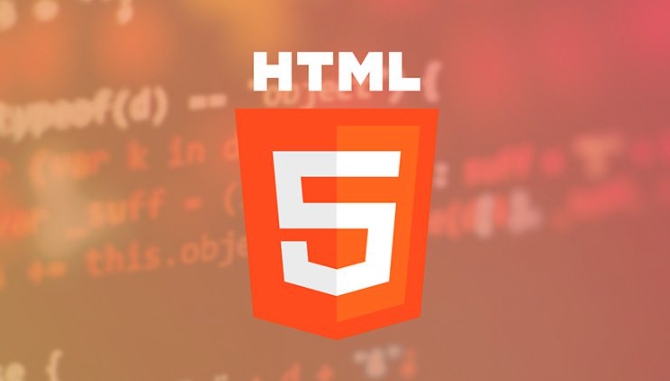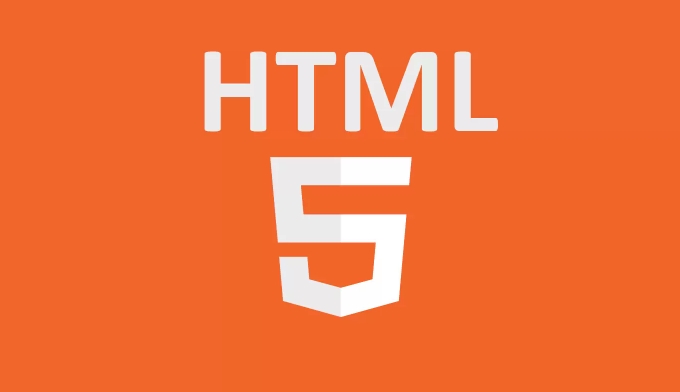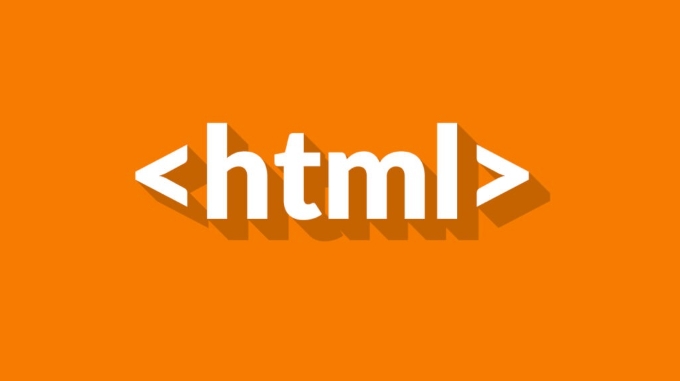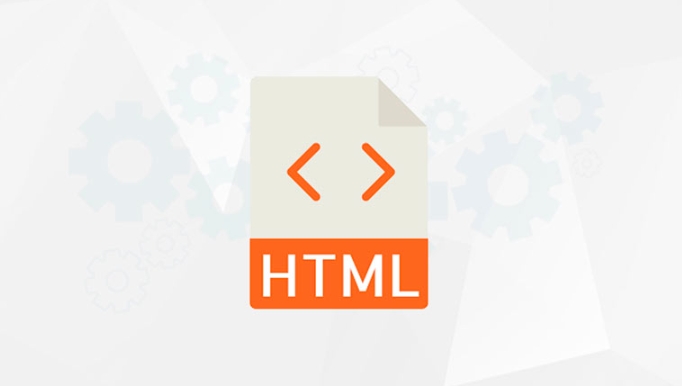The reason why you have to write is to prevent the browser from entering weird mode and ensure that the page is rendered correctly in standard mode. Specifically, it includes: 1. The browser can correctly identify HTML5 document types; 2. Avoid inconsistencies in box model calculation, default style and CSS characteristics due to weird patterns; 3. It is part of the HTML5 standard and is simpler, without reference to DTD; 4. In actual development, it is necessary to pay attention to its location, case and correct insertion during server rendering; 5. Most frameworks will handle it automatically, but it is still necessary to check whether the doctype exists in manual writing or in specific scenarios.

In modern web development, although the function of is simple, it is essential. It tells the browser that the current document is using HTML5 standards, ensuring that the page is rendered in standard mode, rather than compatibility mode. Although this step is inconspicuous, it directly affects the display effect and behavioral performance of the page.

Why do you have to write ?
Although most modern browsers can automatically recognize document types, not writing may cause the browser to enter "Quirks Mode". In this mode, the CSS parsing method will be closer to the behavior of early browsers, resulting in inconsistent layout and style.
Common phenomena include:

- Different calculation methods of box models
- The default margin and padding are inconsistent
- Some CSS features cannot be used properly
Therefore, to ensure that the page renders correctly in all browsers, it is recommended to always write at the beginning of the HTML document.
Its relationship with HTML5
is a standard document declaration method introduced by HTML5. Compared with previous XHTML or HTML 4.01, HTML5's doctype is much simpler and no longer requires reference to DTD (document type definition). This reduces the learning costs for developers and is easier to maintain.

Older version of doctype example (HTML 4.01):
<!DOCTYPE HTML PUBLIC "-//W3C//DTD HTML 4.01 Transitional//EN" "http://www.w3.org/TR/html4/loose.dtd">
The simplicity of HTML5 makes it more suitable for the needs of modern web development and is easier to remember and use.
Things to note in actual development
In actual development, there are several points that are easily overlooked:
- The location must be correct :
must be the first line of the HTML file, and there must be no whitespace characters or comments in front of it. - Case insensitive : HTML is case-insensitive, so it is no problem to write
as <code> . - Pay attention to server rendering : If you use React, Vue and other frameworks for server rendering, make sure that doctype is inserted correctly at the front of the generated HTML string.
If you use template engines (such as Pug, EJS), some will automatically insert doctype for you, but it may also require manual configuration.
Are tools and frameworks automatically processed?
Most modern front-end frameworks (such as Next.js, Gatsby, Vue CLI) will automatically add when generating HTML, so you may not need to add it manually. However, special attention should be paid to the following situations:
- When using static HTML templates
- When writing email templates or micro front-end pages manually
- When doing server-side rendering and splicing HTML strings
At this time, it is best to check the final output HTML source code to ensure that the doctype exists correctly.
Basically that's it. Although it is just a simple statement, it is the most basic and least overlooked part of modern web development.
The above is the detailed content of Using HTML `doctype` in Modern Web Development. For more information, please follow other related articles on the PHP Chinese website!

Hot AI Tools

Undress AI Tool
Undress images for free

Undresser.AI Undress
AI-powered app for creating realistic nude photos

AI Clothes Remover
Online AI tool for removing clothes from photos.

Clothoff.io
AI clothes remover

Video Face Swap
Swap faces in any video effortlessly with our completely free AI face swap tool!

Hot Article

Hot Tools

Notepad++7.3.1
Easy-to-use and free code editor

SublimeText3 Chinese version
Chinese version, very easy to use

Zend Studio 13.0.1
Powerful PHP integrated development environment

Dreamweaver CS6
Visual web development tools

SublimeText3 Mac version
God-level code editing software (SublimeText3)

Hot Topics
 Applying Semantic Structure with article, section, and aside in HTML
Jul 05, 2025 am 02:03 AM
Applying Semantic Structure with article, section, and aside in HTML
Jul 05, 2025 am 02:03 AM
The rational use of semantic tags in HTML can improve page structure clarity, accessibility and SEO effects. 1. Used for independent content blocks, such as blog posts or comments, it must be self-contained; 2. Used for classification related content, usually including titles, and is suitable for different modules of the page; 3. Used for auxiliary information related to the main content but not core, such as sidebar recommendations or author profiles. In actual development, labels should be combined and other, avoid excessive nesting, keep the structure simple, and verify the rationality of the structure through developer tools.
 How to group options within a select dropdown using html?
Jul 04, 2025 am 03:16 AM
How to group options within a select dropdown using html?
Jul 04, 2025 am 03:16 AM
Use tags in HTML to group options in the drop-down menu. The specific method is to wrap a group of elements and define the group name through the label attribute, such as: 1. Contains options such as apples, bananas, oranges, etc.; 2. Contains options such as carrots, broccoli, etc.; 3. Each is an independent group, and the options within the group are automatically indented. Notes include: ① No nesting is supported; ② The entire group can be disabled through the disabled attribute; ③ The style is restricted and needs to be beautified in combination with CSS or third-party libraries; plug-ins such as Select2 can be used to enhance functions.
 Implementing Clickable Buttons Using the HTML button Element
Jul 07, 2025 am 02:31 AM
Implementing Clickable Buttons Using the HTML button Element
Jul 07, 2025 am 02:31 AM
To use HTML button elements to achieve clickable buttons, you must first master its basic usage and common precautions. 1. Create buttons with tags and define behaviors through type attributes (such as button, submit, reset), which is submitted by default; 2. Add interactive functions through JavaScript, which can be written inline or bind event listeners through ID to improve maintenance; 3. Use CSS to customize styles, including background color, border, rounded corners and hover/active status effects to enhance user experience; 4. Pay attention to common problems: make sure that the disabled attribute is not enabled, JS events are correctly bound, layout occlusion, and use the help of developer tools to troubleshoot exceptions. Master this
 Configuring Document Metadata Within the HTML head Element
Jul 09, 2025 am 02:30 AM
Configuring Document Metadata Within the HTML head Element
Jul 09, 2025 am 02:30 AM
Metadata in HTMLhead is crucial for SEO, social sharing, and browser behavior. 1. Set the page title and description, use and keep it concise and unique; 2. Add OpenGraph and Twitter card information to optimize social sharing effects, pay attention to the image size and use debugging tools to test; 3. Define the character set and viewport settings to ensure multi-language support is adapted to the mobile terminal; 4. Optional tags such as author copyright, robots control and canonical prevent duplicate content should also be configured reasonably.
 How to associate captions with images or media using the html figure and figcaption elements?
Jul 07, 2025 am 02:30 AM
How to associate captions with images or media using the html figure and figcaption elements?
Jul 07, 2025 am 02:30 AM
Using HTML sums allows for intuitive and semantic clarity to add caption text to images or media. 1. Used to wrap independent media content, such as pictures, videos or code blocks; 2. It is placed as its explanatory text, and can be located above or below the media; 3. They not only improve the clarity of the page structure, but also enhance accessibility and SEO effect; 4. When using it, you should pay attention to avoid abuse, and apply to content that needs to be emphasized and accompanied by description, rather than ordinary decorative pictures; 5. The alt attribute that cannot be ignored, which is different from figcaption; 6. The figcaption is flexible and can be placed at the top or bottom of the figure as needed. Using these two tags correctly helps to build semantic and easy to understand web content.
 Best HTML tutorial for beginners in 2025
Jul 08, 2025 am 12:25 AM
Best HTML tutorial for beginners in 2025
Jul 08, 2025 am 12:25 AM
TolearnHTMLin2025,chooseatutorialthatbalanceshands-onpracticewithmodernstandardsandintegratesCSSandJavaScriptbasics.1.Prioritizehands-onlearningwithstep-by-stepprojectslikebuildingapersonalprofileorbloglayout.2.EnsureitcoversmodernHTMLelementssuchas,
 How to embed content from another site using the html iframe tag?
Jul 04, 2025 am 03:17 AM
How to embed content from another site using the html iframe tag?
Jul 04, 2025 am 03:17 AM
Use tags to embed other website content into your own web page. The basic syntax is:, you can add width, height, and style="border:none;" to control the appearance; in order to achieve responsive layout, you can set the size through percentage or use containers to combine padding and absolute positioning to maintain the aspect ratio, while paying attention to cross-domain restrictions, loading performance, SEO impact, and security policies. Common uses include embedding maps, third-party forms, social media content and internal system integration.
 HTML for email templates tutorial
Jul 10, 2025 pm 02:01 PM
HTML for email templates tutorial
Jul 10, 2025 pm 02:01 PM
How to make HTML mail templates with good compatibility? First, you need to build a structure with tables to avoid using div flex or grid layout; secondly, all styles must be inlined and cannot rely on external CSS; then the picture should be added with alt description and use a public URL, and the buttons should be simulated with a table or td with background color; finally, you must test and adjust the details on multiple clients.






